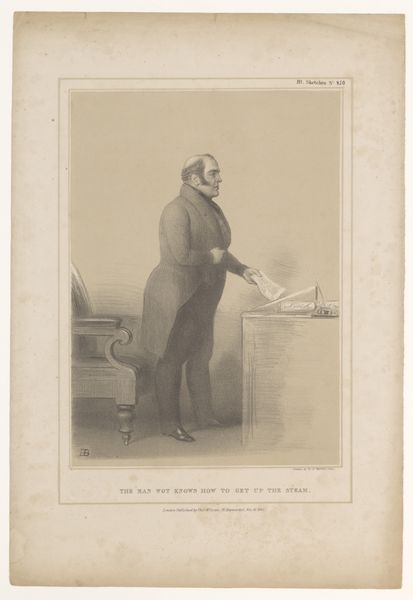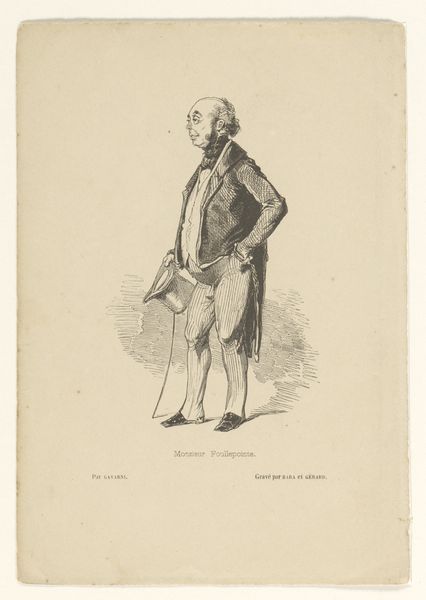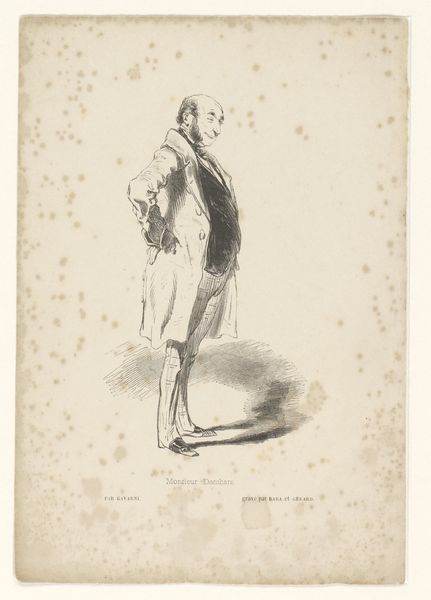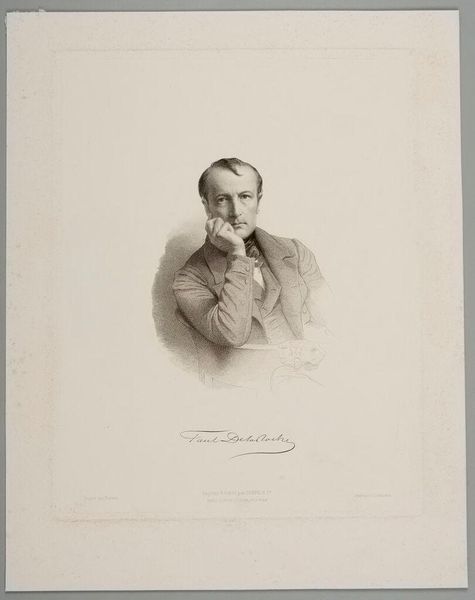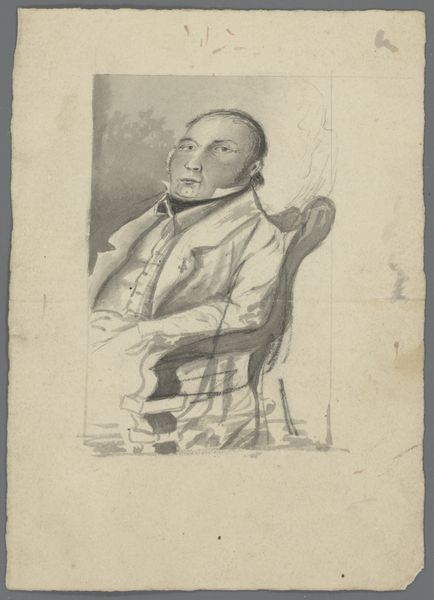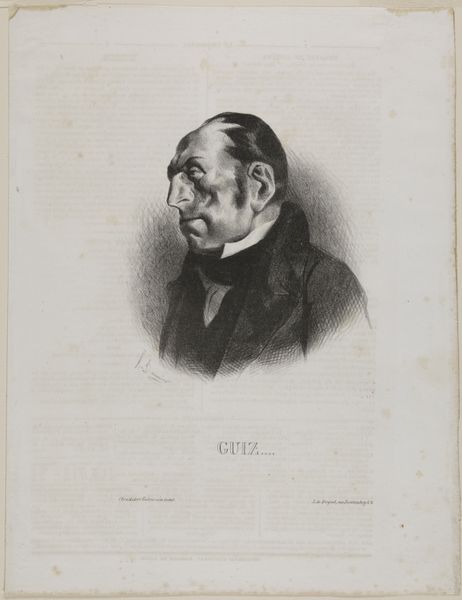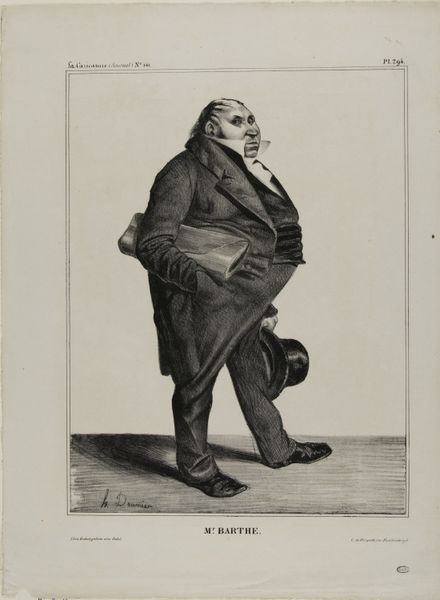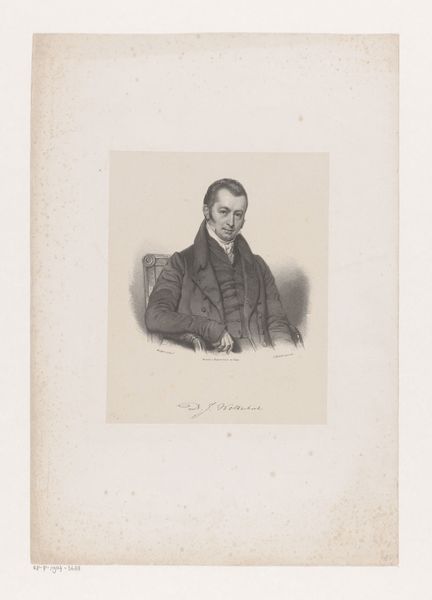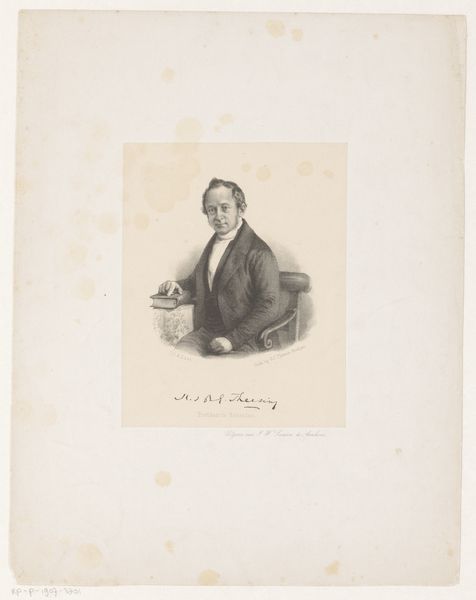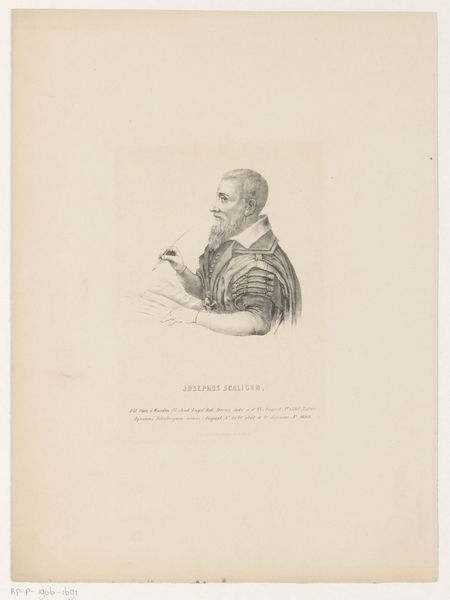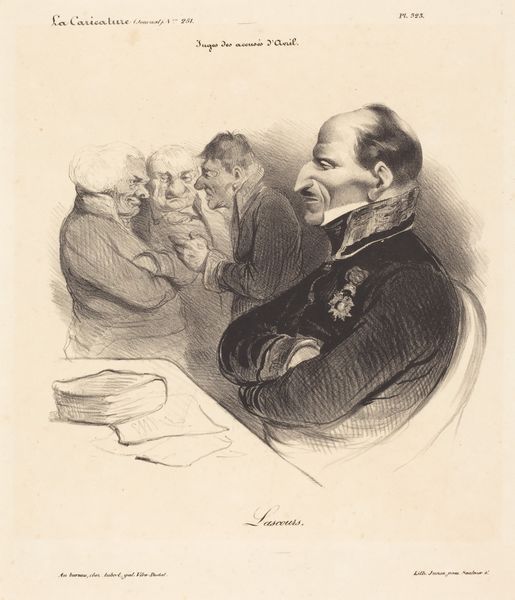
#
photo of handprinted image
#
aged paper
#
light pencil work
#
pale palette
#
yellowing background
#
photo restoration
#
light coloured
#
old engraving style
#
retro 'vintage design
#
watercolour illustration
Dimensions: height 286 mm, width 219 mm
Copyright: Rijks Museum: Open Domain
This lithograph was made by Honoré Daumier, a master of the medium, in nineteenth-century France. Lithography involves drawing with a greasy crayon onto a flat slab of limestone, treating the stone chemically so that the image attracts ink and the rest repels it, and then printing the image onto paper. Daumier was a prolific social commentator, and lithography was his chosen weapon. The inherent qualities of the lithographic crayon – its ability to render both delicate lines and broad, shadowy masses – perfectly suited Daumier’s satirical eye. Look closely, and you’ll see how he used the crayon to build up the figure’s form with myriad tiny strokes, creating a sense of depth and texture. The printing process also allowed Daumier to produce images quickly and in large numbers. This was essential for his work as a caricaturist for the popular press, where he skewered the foibles of the bourgeoisie and the political elite. Daumier used his skills to great effect, demonstrating that even a “low” medium like lithography could be used to create powerful and lasting works of art.
Comments
No comments
Be the first to comment and join the conversation on the ultimate creative platform.


